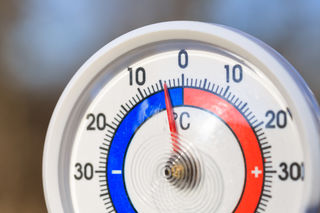Anxiety
Anxiety Is a Symptom
It is not a psychological diagnosis.
Posted November 20, 2019 Reviewed by Gary Drevitch
Every living creature survives by avoiding threats and gravitating towards rewards. The driving force is staying alive. This is accomplished by the nervous system taking in data from the environment through each body sensor and analyzing it every millisecond. All of the senses are in constant competition.
Reality
The first step is for your brain to define reality. There is nothing inherent in any receptor that defines anything. A cat is a cat because your brain has unscrambled visual signals and has determined the nature of this animal. A cat’s meow is analyzed from the auditory receptors and the signals travel to a different area of the brain. Your nervous system must link these two inputs to associate this sound as one that emanates from a cat. This complex sequence occurs for every aspect of your reality. Whatever you call “real” is only your individual interpretation. Although there are close similarities, no one sees even one object exactly the same.

Next, all of your senses keep combining input to determine other properties of objects, such as hot, cold, smooth, red, yellow, loud, bright, etc. Other people are a basic part of this identification process. Your infant has to first recognize you as a human before other layers are added.
At some point, a child recognizes that he or she is separate from others and then realizes that the closeness of the bond with mother/ father hopefully not only represents a haven of safety, but also the link to life itself. Any threat to this connection is unacceptable. Identification of self, relationship to others, social awareness, ideas, concepts and abstract thinking all will progressively follow with age.
"It is only so if I say it’s so."
Nothing exists without your brain gathering data, unscrambling it, and determining what is. (1) It is based on your prior programming. Somewhere in the midst of all of this, babies have to learn to survive on their own, which means that one basic function is determining what is and isn’t safe. However, that can’t happen until some sense of separation and definition of the world has happened. A newborn can’t determine that a hot stove is dangerous until it knows what a stove is. He or she can only instinctively pull away from too much heat but can’t know enough yet to avoid it in the future.
This is how every creature stays alive, with many species being able to care for themselves much more quickly than humans. What drives this action? A core factor is the state of your body’s chemical makeup.
Compelled
The central nervous system maintains the delicate balance of the body’s chemistry by sending signals to different organs and glands. Hormones will be secreted in response to a threat that increase your chances of survival. Some of them are adrenaline, histamines, and cortisol. The net result is an increased capacity to flee from danger. Much of this is modulated through the autonomic nervous system, which also has direct effects such as increased heart rate, rapid breathing, dilation of certain blood vessels and constriction of others.
All of these allow you to leap into action, but what compels you to do so? It is a feeling of dread that we call anxiety. It is so deep and uncomfortable that you have no choice but to take action. Once the threat is gone and the body is back in balance (homeostasis), you can go on with your life. Anxiety describes the cumulative sensation of a threat. It is symptom, not a diagnosis, disease, or disorder. Therefore, it isn’t treatable by primarily addressing it as the problem. Once you understand it is only a warning mechanism, you can address root causes that are unique to you.

Seeking rewards
Conversely, survival also depends on engaging in behaviors that allow you to flourish and procreate. It is enjoyable to eat, quench your thirst, inhale a breath of fresh air, take a nap, empty a full bowel or bladder, make love and spend time with close friends and family. When you are lying in the sun or holding your newborn baby, your body is full of reward chemicals such as oxytocin (love drug), dopamine (rewards), serotonin (mood elevator) and GABA chemicals (anti-anxiety). Your heart rate is slower and your muscles are loose. What a great chemical bath. Many words encapsulate this scenario and I will choose, “relaxed.” Relaxed is a description of this state and also not a diagnosis, disorder or disease.
These shifts in your body’s balance occur by the millisecond. Disease does occur when this balance is disrupted by sustained levels of stress hormones. This data has been known for decades. (2)
“The Curse of Consciousness”
The universal problem of being human is what I call, “The Curse of Consciousness.” Recent neuroscience research has shown that threats in the form of unpleasant thoughts or concepts are processed in a similar area of the brain as physical threats with the same chemical response. (3) The “curse” is that none of us can escape our thoughts, so we are subjected to an endless stress chemical assault on our body. This translates into more than 30 physical symptoms and many disease states. These include autoimmune disorders and early death. (4, 5) However, the worst symptom is relentless anxiety.
Since this unconscious survival mechanism is hundreds of thousands of times more powerful than your conscious brain, it isn’t responsive to rational interventions to manage or control it. The solution lies in the fact that this is an unsolvable problem. Without anxiety that is unpleasant enough so as to compel you take action, you wouldn’t survive. Neither would you or the human species survive without the drive to seek physiological rewards.
Is “relaxed” a diagnosis? No. Is “anxious” a diagnosis? No! To read your body’s chemistry gauge, you first have to allow yourself to feel.
References
Feldman Barrett, Lisa. How Emotions are Made. Houghton Mifflin Harcourt Publishing Company. New York, New York, 2017.
Rahe R, et al. “Social stress and illness onset.” J Psychosomatic Research (1964); 8: 35.
Eisenberger N. “The neural bases of social pain: Evidence for shared representations with physical pain.” Psychosom Med (2012); 74: 126-135.
Torrance N, et al. Severe chronic pain is associated with increased 10-year mortality: a cohort record linkage study. Eur J Pain (2010);14:380-386.
Song, H, et al. Association of stress-related disorders with subsequent autoimmune disease. JAMA (2018); 319: 2388-2400.




